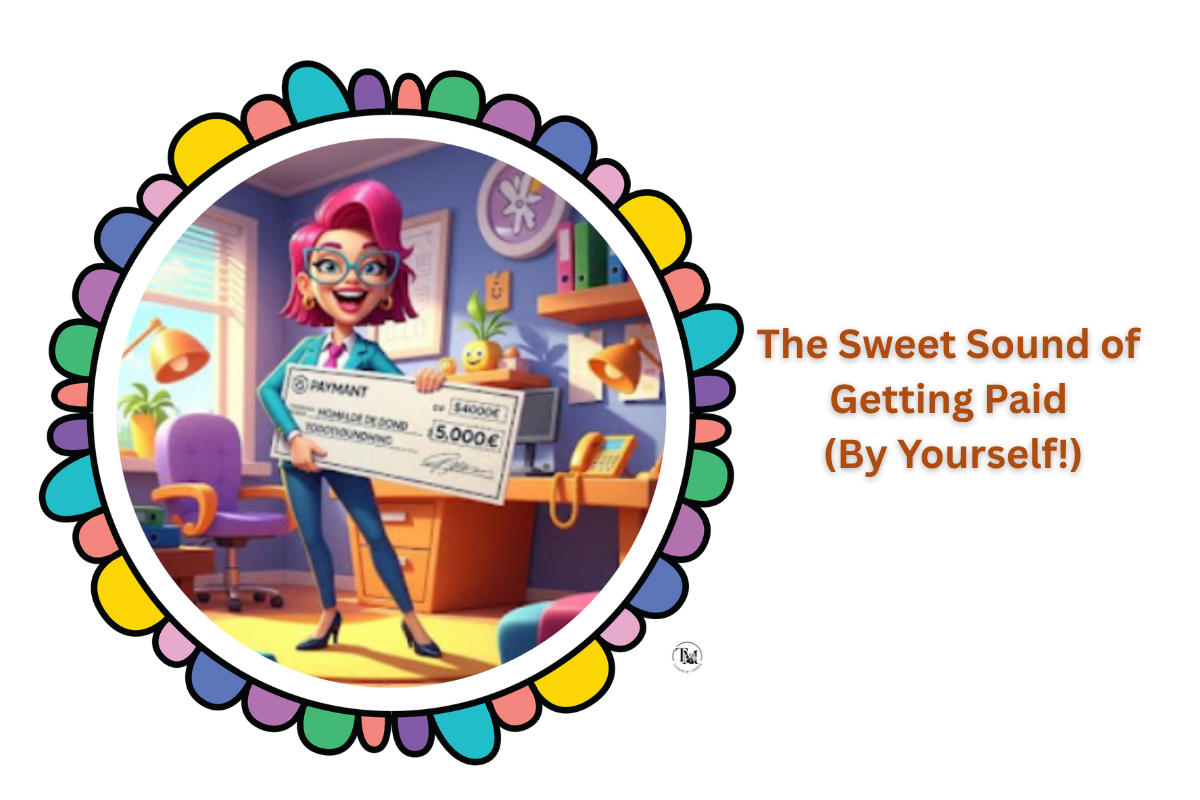Please note: This content is for informational purposes only and not financial advice. Consult a professional for your specific situation. Important Disclaimer
So, you’ve bravely taken the leap, hung out your own shingle, and are officially the captain of your own entrepreneurial ship. You’re juggling clients, marketing, and probably living off lukewarm coffee and sheer willpower. But amidst the glorious chaos, a crucial question arises: how do you, the fearless leader, actually… you know… get paid?
It’s a bizarre situation, isn’t it? The company’s making money (hopefully!), and you’re the one doing, well, pretty much everything. But writing yourself a check can feel oddly… indulgent? Like you’re stealing from your own piggy bank, except the piggy bank also answers your emails at 3 AM.
Fear not, my fellow self-starters! Paying yourself isn’t a luxury; it’s a necessity. It’s the fuel that keeps the entrepreneurial engine chugging (along with copious amounts of caffeine). Let’s dive into the not-so-scary world of owner’s paychecks, with a healthy dose of humor to soften the blow of adulting.
Step 1: Separate Your Personal Dough from the Business Dough (Unless You Enjoy Financial Identity Crisis)
Imagine your business bank account as a separate entity, a slightly demanding roommate who occasionally throws money at you. Your personal account is, well, you – the one who needs to pay rent, buy groceries that aren’t instant noodles, and maybe occasionally splurge on that fancy cheese you deserve.
- Open a Separate Business Bank Account: This is non-negotiable. Mixing personal and business finances is a recipe for tax-time headaches and general confusion. Think of it as keeping your socks separate from your soup – both are important, but you don’t want them mingling unnecessarily.
- Resist the Urge to Treat Your Business Account Like Your Personal ATM: Just because the money is there doesn’t mean it’s all yours to grab on a whim (unless your “whims” involve paying business expenses, which is far less exciting).
Step 2: Decide How You Want to Pay Yourself (Spoiler: There Are Options!)
The method you choose depends on your business structure (sole proprietorship, LLC, S-corp, etc.). This might sound technical, but think of it like choosing your favorite flavor of slightly bitter but ultimately necessary medicine.
- Sole Proprietorship/Single-Member LLC: The Owner’s Draw: This is the simplest method. You basically transfer funds from your business account to your personal account as needed. Think of it as giving yourself an “allowance” from the business. Just keep good records, because Uncle Sam still wants his cut (taxes!).
- Multi-Member LLC: Guaranteed Payments: Similar to a draw, but these are often more structured and can impact self-employment taxes. Consult your accountant – they speak the language of tax code, which is a superpower in itself.
- S-Corp: Salary and Dividends: This involves paying yourself a “reasonable salary” (the IRS has opinions on what’s reasonable, so tread carefully) and then taking out the rest as dividends. This can have tax advantages, but also involves more paperwork. Basically, you become an employee of your own company, which is as meta as it sounds.
Step 3: The “How Much Do I Deserve (Without Bankrupting My Baby)?” Conundrum
This is the million-dollar question (literally, hopefully, someday!). You need to balance your personal financial needs with the financial health of your business.
- Know Your Personal Expenses: Track your own spending (yes, that again!). How much do you need to cover rent, food, bills, and that occasional emergency pizza delivery?
- Consider Your Business Needs: Does your business have upcoming expenses, like new equipment, marketing campaigns, or that much-needed ergonomic chair? Don’t drain the business dry just to fund your Netflix binging habit (tempting as it may be).
- Start Small and Scale Up: When you’re just starting, you might not be able to pay yourself a king’s ransom. That’s okay! As your business grows, you can increase your pay. Think of it as leveling up your financial boss status.
- Be Consistent: Even if it’s a modest amount, try to pay yourself regularly. It provides a sense of stability and makes it easier to budget personally. Imagine the joy of knowing you have a scheduled influx of cash, rather than just hoping for the best.
Step 4: The Art of Record Keeping (Because the IRS Has a Very Specific Sense of Humor)
Remember that separate bank account? Now, diligently track every transfer you make to yourself. Label it clearly as “Owner’s Draw” or “Salary Payment.” Keep receipts for everything business-related.
- Use Accounting Software: Tools like QuickBooks or Xero can be lifesavers (and tax-time sanity preservers). They help you track income, expenses, and owner’s pay in an organized way. Think of it as having a very detail-oriented robot assistant who doesn’t judge your late-night online purchases (as long as they’re technically business-related… maybe?).
- Consult a Tax Professional Regularly: They can provide guidance on deductions, estimated taxes, and ensure you’re not accidentally committing any financial faux pas that could land you in hot water with the tax authorities.
The Sweet, Sweet Sound of Getting Paid (By Yourself!)
Paying yourself as a business owner can feel a little strange at first, but it’s a crucial step in building a sustainable and rewarding venture. Treat yourself like the valuable asset you are (because you are!), plan wisely, keep good records, and don’t forget to celebrate those moments when you can finally afford the good coffee. You earned it! Now go forth, conquer the business world, and, most importantly, make sure you get paid!
The Fun Doesn’t Stop Here!
Keep your budgeting game strong with these awesome reads:
- Adulting Hard: How to Plan for That Big Purchase (Without Selling a Kidney): Master big financial goals with a laugh.
- Diapers, Debt, and Delirium: Your Humorous Guide to Parenting on a Budget: Navigate parenthood and finances with humor.
Remember, this post offers general insights. For personalized financial advice, always consult a qualified professional. Important Disclaimer
